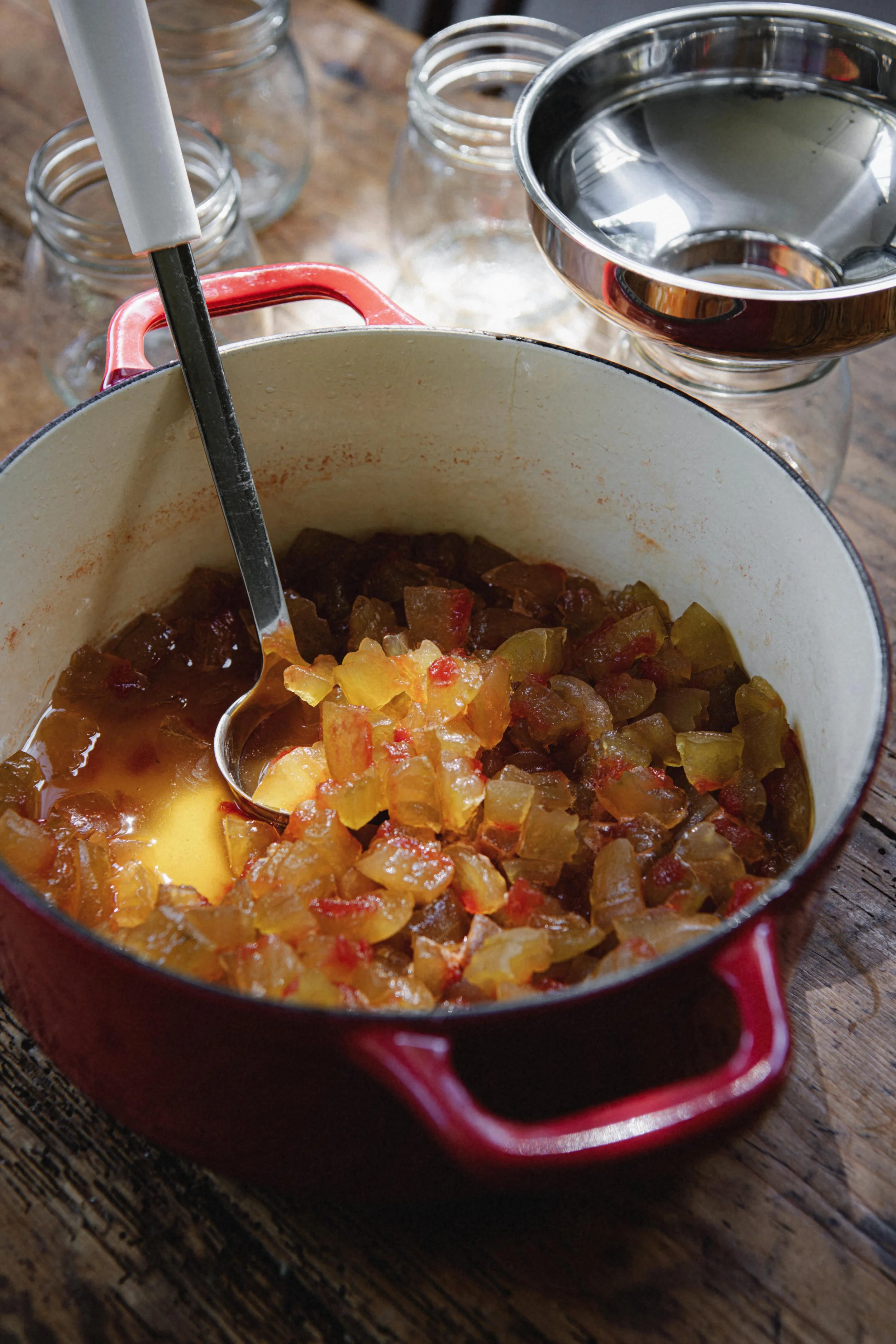Watermelon Rind Preserve
This past summer my son Jasper and I planted four watermelon vines. And voilà! Well, maybe not quite that easy.
We watered and fertilised, making sure the vines never went thirsty. Jasper sent plenty of hopeful prayers to the watermelon gods, and together we kept an eye on the signs of ripeness. We checked the bottoms, waiting for that patch of skin to turn yellow, and the little whisker by the stem to dry up. When Jasper spotted the first melon ready on the vine, he came running, grinning like he had found treasure. And didn’t those melons taste all the sweeter for the efforts we put into growing them? You bet they did!
We ate them in thick wedges on hot afternoons, juice running down our arms, shared some with friends, and turned the rest into cold pink slushies.
Watermelons, the ultimate beacons of summer, also take me back to my childhood. I remember how my dad would go to the Sunday bazar and come home with an armful of melons, and how we cooled them under a thin stream of tap water because they wouldn’t fit into the fridge. Back then water wasn’t metered, and many families did the same. I still remember the trickle of water and the wait for that first cut into the sweet pink flesh.
After we feasted on our watermelons, I was left with a pile of rinds. I saved the thicker ones in the fridge with a plan in mind. Across the Middle East, watermelon rind preserves are a common way to make use of what might otherwise be thrown away. The flavour is mild, the texture soft and chewy, almost like gummies, and it keeps well in syrup for months.
I like to serve the preserve the way I grew up: a small amount in a saucer beside a glass of black tea. Jam went on bread, but preserves were eaten slowly, one teaspoon at a time, with sips of tea in between. It is a simple tradition, one that stretches summer into the cooler months, and one I love to share with my children and friends.
Summer on the farm is golden sunflowers, bumble bees drifting lazily, and watermelons split open in the heat of the day. These are the flavours and colours I always want to hold onto a little longer.
Watermelon Rind Preserve
Watermelon rind preserves are one of my favourite ways to make the most of summer. What might otherwise be thrown away turns into something delicate and sweet, with a soft chewy texture that keeps for months in syrup. I like to serve it the way I grew up, a teaspoon at a time beside a glass of strong black tea.
Yield
Makes about 3 x 300 ml jars of watermelon rind preserves.
Storage
Keeps for up to 12 months in a cool, dark place. Once opened, refrigerate and use within 4–6 weeks.
Cook’s Note
Watermelon rind has a very high water content, so it cooks down a lot as it simmers; expect it to reduce by about half. Cook until the syrup is glossy and lightly coats the back of a spoon. You can flavour the preserve with cardamom, cinnamon, clove, vanilla or rosewater, but I like it best kept simple with just lemon juice. Spoon into sterilised jars while pipping hot, making sure the rind is well covered with syrup, and seal.
Ingredients
1 kg watermelon rind (weighed after removing the pink flesh and outer green skin)
800 g sugar
1 litre water
Juice of 1 large lemon
3-4 cardamom pods (optional)
Method
Trim away the hard green skin, leaving a thin layer of pink flesh on the rind. Dice the rind into small even pieces. A crinkle-cut knife gives a nice look, but a regular knife works just as well.
Place the diced rind and cardamom (if using) in a large pot and cover with sugar. Leave it for about 1 hour, or until the rind has released enough liquid to mostly cover the pieces.
Bring the pot to a gentle simmer over low heat. Cook slowly, stirring now and then, until the rind has reduced by about half, turned translucent, and the syrup lightly coats the back of a spoon. This usually takes 1 hour or more depending on the level of heat.
In the last 5–10 minutes of cooking, add the lemon juice. Stir through and finish simmering.
Spoon the hot preserve into sterilised jars, making sure the rind is completely covered with syrup. Seal and allow to cool before storing.
Serving Suggestion
Serve a small spoonful on the side of a glass of black tea, the way I grew up enjoying it. It also works well on a cheeseboard, or folded into cakes, muffins, or pastries for a gentle sweetness.







